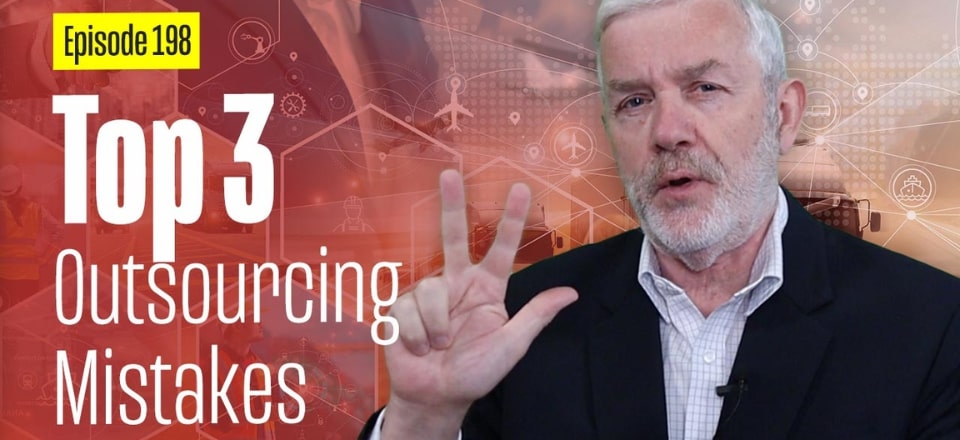Logistics outsourcing can be tricky, especially if you’re unfamiliar with the process. Without the right preparation, mistakes are almost inevitable, and these can result in wasted time and resources.
Watch the video below and discover the common mistakes businesses make during logistics outsourcing and provide some clear tips to help you avoid them altogether.
Logistics outsourcing is a crucial decision for many companies, but it’s also one that can come with its fair share of mistakes. I’ve worked with numerous businesses over the years, and there are three common mistakes I consistently see companies make when outsourcing logistics—mistakes that can lead to unnecessary costs and delays.
The good news is that these are easily avoidable, and I want to walk you through them.
Providing Incomplete or Incorrect Data
The first mistake is failing to provide enough accurate data. Whether you’re outsourcing warehousing or transportation, the 3PL needs precise information to create an efficient solution. Without it, the 3PL will have to make assumptions, and that’s where problems arise. For warehousing, you should provide detailed information like product dimensions, weights, and packaging—how many cartons fit on a pallet, how much space you need, etc. This allows the 3PL to design a storage system that fits your specific needs. It’s not just about the products themselves but also about demand patterns—how often are orders placed, what’s the average number of SKUs per order, and what are your picking needs? Ideally, the 3PL should have 12 months of transactional data so they can get a clear picture of your operations. If this data isn’t supplied upfront, you’ll likely end up with a solution that’s less efficient and more expensive.
Rushing the Process
Another common mistake is underestimating the amount of time it takes to properly outsource logistics. Many companies think they can wrap up the process in a couple of months, but that’s simply not realistic. From preparing your RFP (Request for Proposal) and gathering data to evaluating potential providers, it all takes time. Even if you’re looking for a straightforward warehousing solution, you should expect the process to take six to eight months at minimum. If you’re considering a new facility or more complex logistics, it could take 12 months or longer. Rushing through these steps means you’ll have less time to thoroughly assess your options and will likely make a hasty decision that doesn’t meet your needs in the long run.
Approaching the Wrong Providers
The third mistake I see is companies reaching out to too many 3PLs—this is a surefire way to waste time and confuse the process. You don’t need to send your RFP to dozens of providers. Instead, narrow down your list to four to six options that are the best fit for your business. Look for providers who have experience in your specific industry and who can handle your requirements. The goal is to find two or three strong candidates, not to overwhelm yourself with too many options.
Avoid these three mistakes—providing inaccurate data, rushing the timeline, and selecting the wrong providers—and you’ll set yourself up for a successful logistics outsourcing experience.
Related articles on this topic have appeared throughout our website, check them out:
- 6 Quick Tips for Successful Logistics Outsourcing
- Insourcing or Outsourcing Logistics: Don’t Choose the Wrong Reasons
- 10 Common Pitfalls to Avoid in Logistics Outsourcing
Editor’s Note: The content of this post was originally published on Logistics Bureau’s website dated April 19, 2023, under the title “Top 3 Logistics Outsourcing Mistakes You Don’t Want to Make“.


